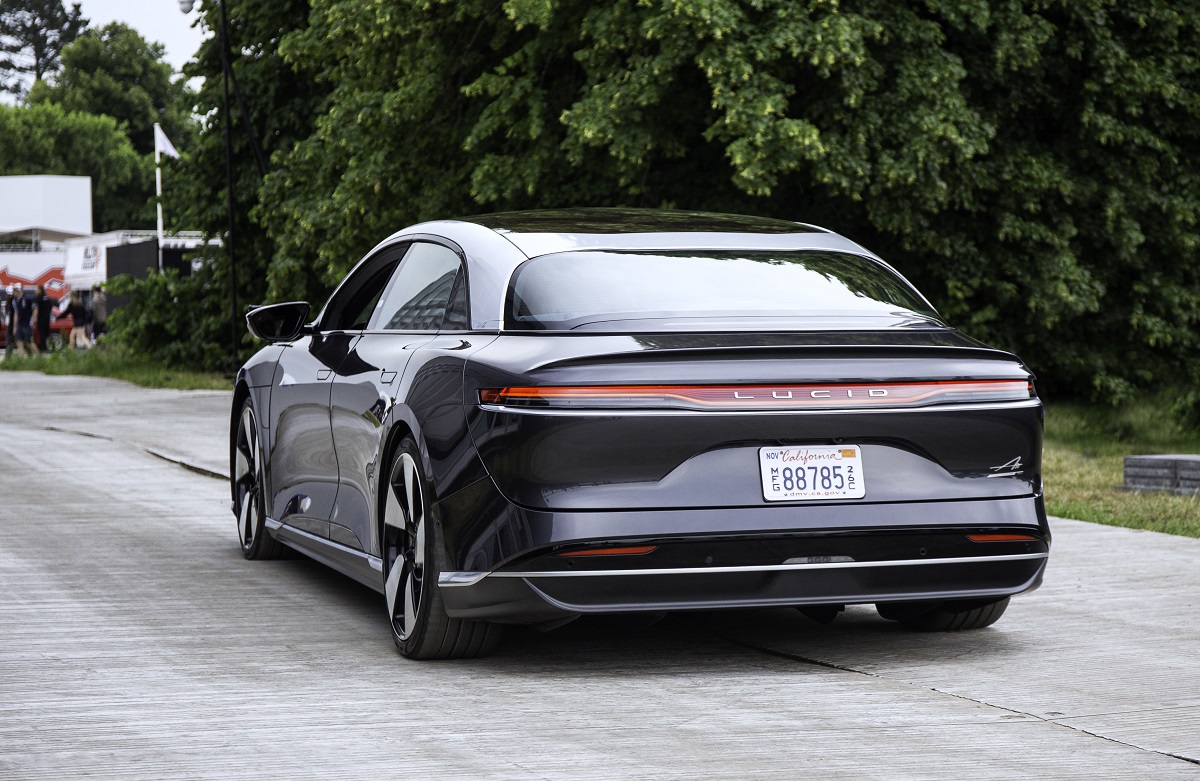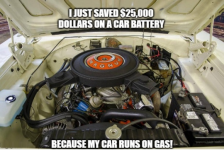Already happened. Then I returned it back to them when I bought my own car for the first time. Then I sold that car (to my parents) when I bought my RAV4. Then I bought my Town Car as a "second vehicle".
You wish that your EV actually sounded like that, don't you? Too bad, so sad!
Meh. I typically change my engine oil as recommended by my vehicle's manufacturer / owner's manual. For my RAV4, that is every 5,000 miles (~ six months) per my owner's manual. Toyota has since recommended every 10,000 miles (~ one year) for the same engine (if using a synthetic oil, of course), but I choose to still follow the "original guidelines". My Town Car's manual recommends every 5,000 miles (~ six months) as well, of which I also follow. I also check my engine oil level every now and then and can visibly see it change color over time.
The color is the key. New engine oil looks like honey color, but becomes black and opaque over time. When it becomes dark, it's time to change it.
Transmission oil is also best checked by color. New oil is red, but if it becomes brown or has particulates in it, it's time to change it and inspect the transmission.
In most cars, the differential is separate from the transmission, and uses it's own gear oil. Some cars have TWO differentials (a front and rear one). In cars like a Subaru, the front differential is lubricated by transmission oil, but in the past they used 10W40 oil (that was separate from the engine oil!).
'Synthetic' oil (it's real oil, but with synthetic additives!) can last a long time. This is pretty stable stuff.
Dexron 6, used as a Tesla motor oil, is also a synthetic oil. This oil also lubricates not only the motor, but the transmission in an EV.
Changing engine oil on a gasoline car is ten minutes once or twice a year. It's also a good time to inspect the underside of the car, since cars are kind of built like turtles. All the good stuff is under the car. Look for CV boots cracking or split, general overall condition of struts, chassis rust, exhaust holes or gaps, anything dripping, etc.
EV owners should also inspect once in a while. They don't change the oil as often as a gasoline car, so there is nothing to remind them. Again, you should look for split or damaged CV boots, damage to the struts, anything dripping (especially coolant!), and make sure the radiators are clear. This should be done at least annually, preferably before winter.
If coolant is dripping, DO NOT CHARGE OR DRIVE THE CAR!! Get it on a flatbed and get it to the dealer for immediate repair!



